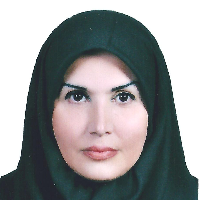The Practical Concept of Green Smart Building (Case Study: District 1, City of Tehran)
Sustainable and green approaches in architecture are expanding due to the importance of achieving goals of reducing carbon footprint and adapting to the consequences of global warming. The design and construction of smart green buildings have been considered as an efficient model in terms of energy consumption and meeting the needs of residents. Smart green buildings use the green Internet of Things and ICT. In addition to the proper management of energy, water, and waste, they affect the health and quality of the indoor environment, while the investment cost and higher selling price may limit their development. Therefore, this research aims to investigate the feasibility of green smart building concept implementation from the project beneficiaries’ perspective in Iran, analyzing the views of residents and home buyers.
This applied research uses an analytical-descriptive method based on desk research, field studies, and questionnaires. The effective factors in the application of smart green building concepts, as the innovation of the study, have been investigated with its goals including technology, energy saving, and creating a healthy and clean environment. A questionnaire with 39 questions was designed, encompassing four dimensions comprising the benefits of smart green building, factors affecting buyers' willingness, estimation of necessary cost for construction, and factors affecting the implementation of smart green concept in construction. Then, possible effective factors in the successful implementation of green building criteria were classified into three categories: leadership and responsibility, principles and techniques, and feedback and creating public trust. The research was conducted focusing on District 1 of Tehran in the northernmost part of the city, and the resident households with the ability to purchase a green residential unit with an added value equal to 10-31% compared to normal units formed the target statistical population. In the pre-test stage, the questionnaire was distributed among 30 individuals and the sample size was obtained by analyzing the data. After collecting the data, all statistical analyzes analyses were done using SPSS software.
The results of the survey of 62 responses to the questionnaire show that among the advantages of smart green buildings, energy efficiency, material efficiency, and land efficiency are more important, respectively. Most respondents believe that green smart buildings save maintenance costs and thus reduce energy demand for lighting, heating, and air conditioning. Economic incentives are the priority of policy measures, and granting tax discounts to buyers of green housing affects buyers' willingness. Labeling buildings and paying subsidized loans and grants are in the next positions. Moreover, half of the respondents estimated the added value needed to build a house or apartment with a green rating compared with a similar normal house or apartment to be more than 30%, which is congruent with previous studies. Buyers' willingness to pay additional prices rises with increasing income and 40.3% of respondents are willing to pay more to buy a green smart building as a new house or apartment.
To increase buyers’ willingness to pay extra, it is necessary to moderate the price of green buildings. Providing suitable platforms to raise public awareness about the concept of green building can help users and consumers to make proper decisions. Currently, green building is prioritized due to its environmental effects. Nevertheless, it is necessary to consider its potential economic and human benefits, which is one of the key points for the success of green buildings in the future. The successful implementation of the smart green building program requires defining the vision and technological instructions, preparing a road map, and then prioritizing and streamlining the construction and renovation projects with the aim of sustainability.
- حق عضویت دریافتی صرف حمایت از نشریات عضو و نگهداری، تکمیل و توسعه مگیران میشود.
- پرداخت حق اشتراک و دانلود مقالات اجازه بازنشر آن در سایر رسانههای چاپی و دیجیتال را به کاربر نمیدهد.


